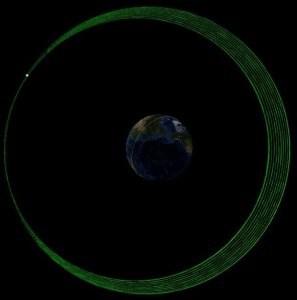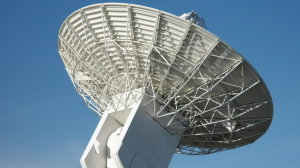Europe’s fifth Galileo satellite, one of two delivered into a wrong orbit by VS09 Soyuz-Fregat launcher in August, has transmitted its first navigation signal in space on Saturday 29 November 2014. It has reached its new target orbit and its navigation payload has been successfully switched on.
A detailed test campaign is under way now the satellite has reached a more suitable orbit for navigation purposes.
Recovery
The fifth and sixth Galileo satellites, launched together on 22 August, ended up in an elongated orbit travelling up to 25 900 km above Earth and back down to 13 713 km.
A total of 11 manoeuvres were performed across 17 days, gradually nudging the fifth satellite upwards at the lowest point of its orbit. “The manoeuvres were all normal, with excellent performance both in terms of thrust and direction,” explained Daniel Navarro-Reyes, ESA Galileo mission analyst.
As a result, it has risen more than 3500 km and its elliptical orbit has become more circular. “The final orbit is as we targeted and is a tribute to the great professionalism of all the teams involved.”
The commands were issued from the Galileo Control Centre by Spaceopal, the Galileo operator, at Oberpfaffenhofen in Germany, guided by calculations from a combined flight dynamics team of ESA’s Space Operations Centre, ESOC, in Darmstadt, Germany and France’s CNES space agency.
The commands were uploaded to the satellite via an extended network of ground stations, made up of Galileo stations and additional sites coordinated by France’s CNES space agency.
Satellite manufacturer OHB also provided expertise throughout the recovery, helping to adapt the flight procedures.
Until the manoeuvres started, the combined ESA–CNES team maintained the satellites pointing at the Sun using their gyroscopes and solar sensors. This kept the satellites steady in space but their navigation payloads could not be used reliably.
In the new orbit, the satellite’s radiation exposure has also been greatly reduced, ensuring reliable performance for the long term.
Suitable orbit
The revised, more circular orbit means the fifth satellite’s Earth sensor can be used continuously, keeping its main antenna oriented towards Earth and allowing its navigation payload to be switched on.
Significantly, the orbit means that it will now overfly the same location on the ground every 20 days. This compares to a normal Galileo repeat pattern of every 10 days, effectively synchronising its ground track with the rest of the Galileo constellation.
The navigation test campaign
The satellite’s navigation payload was activated on 29 November, to begin the full ‘In-Orbit Test’ campaign. This is being performed from ESA’s Redu centre in Belgium, where a 20 m-diameter antenna can study the strength and shape of the navigation signals at high resolution.
“First, the various payload elements, especially the Passive Hydrogen Maser atomic clock, were warmed up, then the payload’s first ‘signal in space’ was transmitted,” said David Sanchez-Cabezudo, managing the test campaign.
“The satellite-broadcast L-band navigation signal is monitored using the large antenna at Redu, with experts from OHB and Surrey Satellite Technology Ltd (payload manufacturer based in Guildford, UK) also on hand to analyse how it performs over time.”
The first Galileo FOC navigation signal-in-space transmitting in the three Galileo frequency bands (E5/E6/E1) was tracked by Galileo Test User Receivers deployed at various locations in Europe, namely at Redu (B), ESTEC (NL), Weilheim (D) and Rome (I). The quality of the signal is good and in line with expectations.
The Search And Rescue (SAR) payload will be switched on in few days in order to complement the in-orbit test campaign.
The way forward
The same recovery manoeuvres are planned for the sixth satellite, taking it into the same orbital plane but on the opposite side of Earth.
The decision whether to use the two satellites for Navigation and SAR purposes as part of the Galileo constellation will be taken by the European Commission based on the test results.



Hello,
Great news for Galileo!! Once the FM5 has been repositioned during the month of November into a more circular orbit, it’s time for start processing its signals.
An early processing has already been performed with magicGNSS early this week based on the measurements collected by the MGEX network on Sunday 30th (http://magicgnss.gmv.com/wordpress/?p=1743).
Once its clock is stabilized, a deeper POD analysis will be performed.
Cheers and congratulations!
Guillermo
Hi Guillermo,
We will be delighted to receive further analysis by magicGNSS when clock is stable.
Thanks!
Lovely post! I’m fascinated by how satellites work and by how much society relies on them in order to function. It’ll be interesting to see how much satellites improve in the future. Thanks so much for sharing!
Hi Valerie,
Thanks for reading us. We will keep you all updated!